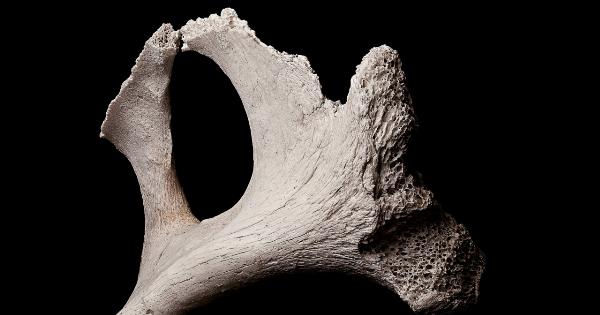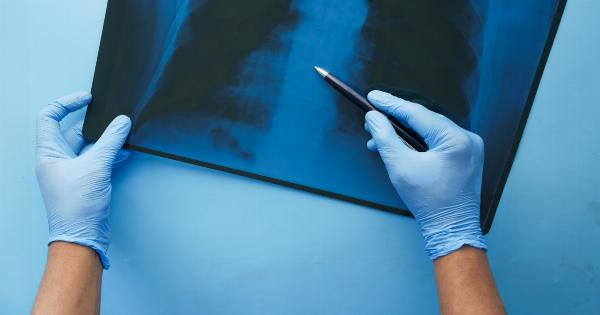A fracture, commonly known as a broken bone, is a medical condition in which there is a break or crack in the continuity of a bone. Fractures can range from minor cracks to severe breaks that may require surgery to heal properly.
The time it takes for a fracture to heal depends on various factors, including the type and location of the fracture, the age and overall health of the individual, and the treatment provided. In this article, we will explore the healing process of fractures and discuss the typical timeframes for various types of fractures.
Types of fractures
Fractures can be classified into several types based on their characteristics and the way they occur:.
1. Closed fracture
A closed fracture, also known as a simple fracture, is a fracture in which the broken bone does not pierce through the skin. It is one of the most common types of fractures and can occur due to trauma, sports injuries, or falls.
Closed fractures generally heal faster compared to open fractures because the risk of infection is lower.
2. Open fracture
An open fracture, also known as a compound fracture, is a fracture in which the broken bone protrudes through the skin, exposing it to potential infection. Open fractures are considered more severe and require immediate medical attention.
The healing time for open fractures is typically longer due to the increased risk of complications.
3. Greenstick fracture
A greenstick fracture is a type of fracture commonly seen in children. In this type of fracture, the bone bends and cracks, but does not break completely.
Greenstick fractures are often easier to treat and heal more quickly because the bone remains partially intact.
4. Hairline fracture
A hairline fracture, also known as a stress fracture, is a small crack in the bone that may be difficult to detect on an X-ray. Hairline fractures are typically caused by repetitive stress on the bone, such as running or jumping.
These fractures usually heal within a few weeks with proper rest and care.
5. Comminuted fracture
A comminuted fracture is a severe type of fracture in which the bone shatters into multiple fragments. These fractures usually require surgical intervention and may take a longer time to heal.
The healing process for comminuted fractures depends on several factors, including the age and overall health of the individual.
6. Displaced fracture
A displaced fracture occurs when the broken ends of the bone are out of alignment. This can happen due to high-impact injuries or severe trauma. Displaced fractures often require realignment or surgical intervention to enable proper healing.
The healing time for displaced fractures varies depending on the severity and location of the fracture.
Factors influencing fracture healing
Several factors can influence the healing time for fractures:.
1. Age
Young children and teenagers tend to heal faster than adults due to their higher metabolism and better blood supply to the bones. Older adults may experience slower healing as their bone density decreases with age.
2. Location
The location of the fracture plays a role in the healing time. Fractures near joints or areas with limited blood supply, such as the wrist or ankle, may take longer to heal compared to fractures in well-perfused areas.
3. Type of fracture
The type of fracture, as mentioned earlier, influences the healing time. Simple fractures generally heal faster than complex fractures that require surgical intervention.
4. Overall health
A person’s overall health can affect the healing process. Certain medical conditions like osteoporosis or diabetes can slow down the healing of fractures. Smoking, poor nutrition, and compromised immune systems can also delay the healing process.
Timeframes for fracture healing
The healing time for fractures can vary significantly depending on various factors. However, there are general guidelines for different types of fractures:.
1. Hairline fractures
Hairline fractures typically take around 4-6 weeks to heal. Rest, avoiding weight-bearing activities, and using supportive devices like casts or braces can aid in the healing process.
2. Closed fractures
Most closed fractures require around 6-8 weeks to heal. However, the exact healing time can vary depending on the bone involved, the age of the individual, and the treatment provided.
3. Open fractures
Open fractures often take longer to heal compared to closed fractures. The healing time for open fractures can range from several weeks to several months, depending on the severity, the presence of infection, and the treatment received.
4. Comminuted fractures
Comminuted fractures, which involve multiple bone fragments, generally take longer to heal compared to simpler fractures.
The healing time for comminuted fractures can range from several months to a year, depending on the complexity and the treatment approach.
5. Fractures requiring surgery
Fractures that require surgical intervention, such as displaced or complex fractures, may have a longer healing time. The exact timeframe can vary based on the individual and the surgical procedure performed.
Preventing complications and promoting healing
To facilitate the healing process and prevent complications, certain measures can be taken:.
1. Follow medical advice
It is crucial to follow the advice and instructions provided by healthcare professionals. This includes properly immobilizing the fracture with casts, braces, or splints and taking any prescribed medications.
2. Rest and protect the fracture site
Resting the affected area and avoiding weight-bearing activities can help prevent further damage and promote healing. Using assistive devices like crutches or walkers can aid in mobility while protecting the fracture site.
3. Eat a nutritious diet
A balanced diet rich in essential nutrients, particularly calcium and vitamin D, is essential for bone health and healing. Adequate protein intake is also important, as it supports tissue repair and regeneration.
4. Avoid smoking and limit alcohol consumption
Smoking can delay the healing process and increase the risk of complications. It is advisable to quit smoking during the healing period. Excessive alcohol consumption can also hinder the healing process, so it is recommended to limit alcohol intake.
5. Physical therapy
Depending on the type and location of the fracture, physical therapy may be recommended to restore strength, flexibility, and function to the affected area. Physical therapy can assist in the rehabilitation and recovery process.
Conclusion
The healing time for fractures varies based on factors such as the type and location of the fracture, age, overall health, and treatment received.
While hairline fractures may heal within a few weeks, more complex fractures may take several months to heal completely. It is crucial to follow medical advice, rest the affected area, and maintain a healthy lifestyle to facilitate the healing process and prevent complications.






























